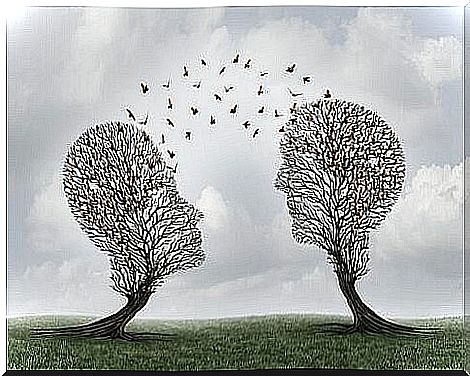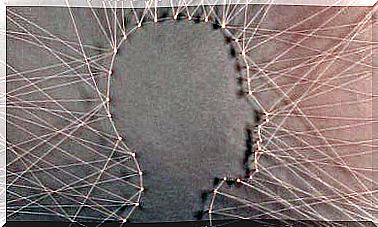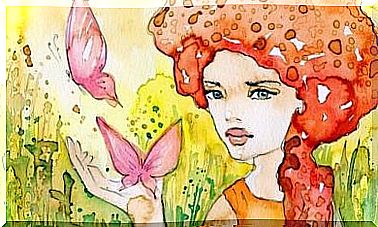Social Cognition, What Is It Really?

What is social cognition? Social cognition is what we call the study of how we process information (Adolphs, 1999). To put it another way, that process includes the way we encode, store, and retrieve information from social situations.
Currently, social cognition is the prevailing model and approach in social psychology. The alternative is behaviorism, which rejects mental processes when explaining behavior (Skinner, 1974).
Social cognition is the way we think of others. Basically, it is a basic, powerful tool for understanding social relationships. Through social cognition, we understand other people’s emotions, thoughts, intentions and social behaviors. In fact, knowing what others are thinking and feeling can be a great benefit.

How does social cognition work?
People do not approach situations as neutral observers – although we often like to pretend to do so. We have our own desires and expectations, and they affect what we see and what we remember. In other words, our senses receive information which we then interpret and analyze. We then contrast these interpretations with the information we store in our memory.
This simple description provides a good explanation, but this is not always the case in reality. There are other factors, such as emotions, that also affect the process. Remember that thoughts affect emotions, but also that emotions influence thoughts (Damasio, 1994).
For example, when we are in a good mood, the world (it may at least seem that way) is a much better place. When we are happy, we tend to perceive the present more optimistically, at the same time as we see both the future and the past in a more positive light as well.
How does social cognition develop?
Social cognition develops slowly (Fiske and Taylor, 1991). We go through a process of trial and error based on observations. It is direct experience and learning through guided exploration. However, social knowledge is very subjective; we can draw very different conclusions about the same social event.
In addition, although we have mental structures that promote information processing and organization, they do not always function as they should. These structures or schemes affect what we focus on. They also affect how we code and retrieve information, and can lead to self-fulfilling prophecies. These are predictions that cause what was predicted to actually happen (Merton, 1948).
On the other hand , social knowledge is, at least in part, independent of other types of knowledge. People who do very well in problem solving measured in IQ tests are not always as good at solving social problems.
Problem-solving skills can be learned or taught, separate from intellectual abilities. Therefore, it is important to work with our different types of intelligence, such as emotional and cultural intelligence.

Put yourself in the other person’s shoes
One of the most useful models for social cognition comes from Robert Selman. Selman put forward a theory about people’s ability to see from the social perspective of others. For him, being able to take on another’s social perspective is what gives us the opportunity to understand ourselves and others as individuals. This gives us the opportunity to react to our own behavior from another’s point of view. Selman (1977) created 5 stages of perspective change:
- Stage 0: Undifferentiated perspective (from 3 to 6 years). Until children are 6 years old, they cannot clearly distinguish between their own interpretation of a social situation and another point of view. Nor can they understand that their own opinion may not be correct.
- Stage 1: Social information perspective (from 6 to 8 years). At this age, children develop the knowledge that other people may have a different perspective than themselves. However, children have little understanding of the logic behind the perspective of others.
- Stage 2: Self-reflective perspective (8 to 10 years). Children at this stage can see from the perspective of another individual. They are already able to distinguish between different perspectives. They can also reflect on the motivations behind their own behavior from another person’s perspective.
- Stage 3: Third-party or “passer-by” perspective (10 to 12 years). Children can see their own perspectives, the perspectives of their peers, as well as the perspective of a neutral third person. As third-party observers, we see ourselves as the object.
- Stage 4: Social perspective (adolescence and adulthood). There are two characteristics that underlie young people’s perception of other people. First, they become aware that motives, behaviors, thoughts, and emotions are shaped by psychological factors. Second, they begin to appreciate the fact that a personality is a system of qualities, beliefs, values, and attitudes.
Two ways to look at social cognition
Within psychology, there are several different ways of understanding social cognition. One of the most important ways emphasizes the social dimension of knowledge. Knowledge, according to this perspective, has a sociocultural origin, since it is shared by social groups.
Moscovici is the most important representative of this idea (1988). He talked about “social representations”, ideas, thoughts, images and knowledge that members of a society share. Social representations have a dual function: to know reality in order to be able to plan behavior and also to promote communication.
The American perspective on this topic has also had a major impact (Lewin, 1977). It is a way of understanding social cognition that focuses on the individual and their psychological processes. According to this perspective, a person constructs their own cognitive structures from interactions with their physical and social environment.
To conclude, social cognition is the way we handle the vast amount of social information we take in about ourselves every day. The stimuli and data we collect with our senses are analyzed and integrated into mental arrangements, which will later influence and guide our thoughts, emotions and behaviors.
These schemes, once formed, are difficult to change. As Albert Einstein said, it is more difficult to split prejudices than an atom. Our first impressions remain with us, if we do not think of them in a critical light.









